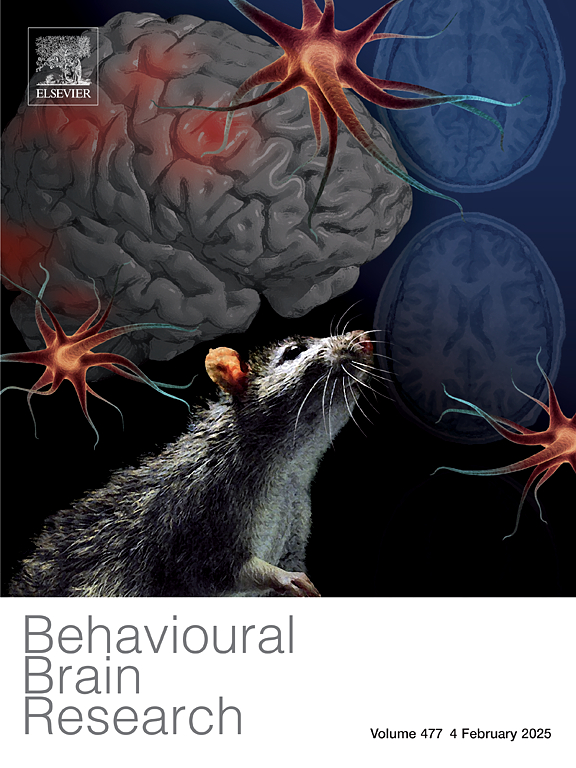Do snakes alter our visual attention to food?
IF 2.6
3区 心理学
Q2 BEHAVIORAL SCIENCES
引用次数: 0
Abstract
The need to detect and avoid predators drives many aspects of foraging behavior. Snakes are historical predators of primates, but predator avoidance-foraging tradeoffs are rarely studied in humans. We examined whether humans have a detection bias for snake versus food images using eye-tracking technology in 76 undergraduate student participants (38 men, 38 women). We tested three questions: 1) Do humans exhibit a visual bias to snakes over food? 2) Does food palatability affect any visual bias to snakes? 3) Is the response to snakes specific for these predators or a generalized reaction to a visually evocative stimulus? We analyzed three metrics in balanced pairs of food and snake images and images normatively ranked for arousal (low, high) and emotional valence (negative and positive): saccade latency, gaze duration, and saccade bouts. There was a strong bias toward shorter saccade latency with the snake images relative to food images. Gaze duration and saccade bouts were significantly greater for snake images relative to food images. Food palatability had discrete effects on the visual bias to snake images. Finally, qualitatively similar effects on visual bias were observed in response to negative valence, high arousal non-snake images. While humans display a gaze bias to snakes over food, this bias may be related to the negative valence and high arousal linked to snake images rather than key visual features of snakes themselves.
蛇会改变我们对食物的视觉注意力吗?
探测和躲避捕食者的需要驱动了觅食行为的许多方面。蛇历来是灵长类动物的捕食者,但在人类身上很少研究捕食者回避与觅食之间的权衡。我们使用眼动追踪技术对76名大学生(38名男性,38名女性)的蛇和食物图像是否存在检测偏差进行了研究。我们测试了三个问题:1)人类是否表现出对蛇的视觉偏见而不是食物?2)食物的适口性是否会影响对蛇的视觉偏见?3)对蛇的反应是这些捕食者特有的,还是对视觉唤起刺激的普遍反应?我们分析了平衡对食物和蛇图像的三个指标,以及对唤醒(低、高)和情绪效价(消极和积极)进行规范排序的图像:眼跳潜伏期、凝视持续时间和眼跳发作。与食物图像相比,蛇图像更倾向于较短的扫视潜伏期。与食物图像相比,蛇图像的凝视持续时间和扫视次数显著增加。食物的适口性对蛇图像的视觉偏差有离散影响。最后,在对负效价、高唤醒的非蛇图像的反应中,观察到定性上类似的视觉偏见效应。虽然人类对蛇的注视比食物更有偏见,但这种偏见可能与蛇图像的负效价和高唤醒有关,而不是与蛇本身的关键视觉特征有关。
本文章由计算机程序翻译,如有差异,请以英文原文为准。
求助全文
约1分钟内获得全文
求助全文
来源期刊

Behavioural Brain Research
医学-行为科学
CiteScore
5.60
自引率
0.00%
发文量
383
审稿时长
61 days
期刊介绍:
Behavioural Brain Research is an international, interdisciplinary journal dedicated to the publication of articles in the field of behavioural neuroscience, broadly defined. Contributions from the entire range of disciplines that comprise the neurosciences, behavioural sciences or cognitive sciences are appropriate, as long as the goal is to delineate the neural mechanisms underlying behaviour. Thus, studies may range from neurophysiological, neuroanatomical, neurochemical or neuropharmacological analysis of brain-behaviour relations, including the use of molecular genetic or behavioural genetic approaches, to studies that involve the use of brain imaging techniques, to neuroethological studies. Reports of original research, of major methodological advances, or of novel conceptual approaches are all encouraged. The journal will also consider critical reviews on selected topics.
 求助内容:
求助内容: 应助结果提醒方式:
应助结果提醒方式:


